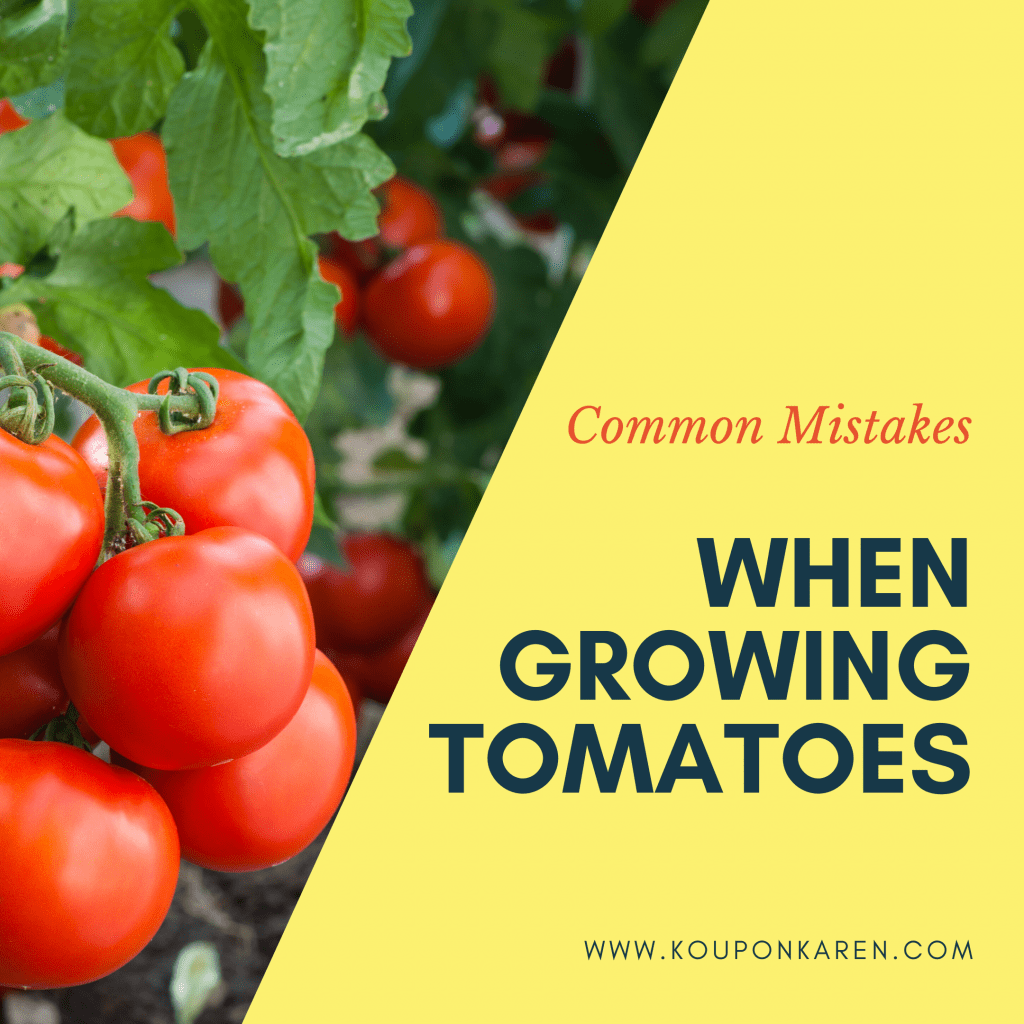We love to grow tomatoes and they are always in our garden. It’s the first thing I plant! Although technically a fruit, tomatoes are a staple in most homeowner’s vegetable gardens. Their versatility in the kitchen and health benefits have helped them gain that popularity, along with the fact that they are easy to grow and will often produce high yields. Even the most novice gardener will have little difficulty, provided that a few common mistakes when growing them are avoided.
Common Mistakes When Growing Tomatoes
Site Selection
Tomatoes will produce the best when planted in a location that gets full sun. A minimum of six hours of direct sunlight will suffice but choosing a location with eight hours will have a bigger payout when it comes time to harvest. Tomatoes also require fertile, well-draining soil. Existing soil can be amended if it doesn’t meet this requirement. Prior to planing, incorporating peat humus or compost will remedy poor soil conditions.
Lack Of Irrigation
Most beginner gardeners are unaware of the quantity of water their plants require and this is especially important for fruit-bearing plants. A lack of water can cause plant stress and delay bloom time or kill off immature fruit. Keeping your plants hydrated is easier if they are watered deeply and thoroughly. Installing soaker hoses prior to installation is a good way to ensure a deep watering, allowing this hose to run for about an hour every few days, depending on the weather.
Proper Installation
Tomatoes are one of the very few plants that do better if they are installed deeply. They will create more roots along the base of the stem, these extra roots allow the plant to absorb more water and nutrients that are available in the soil. It also aids in creating a more stable plant. Seedlings can be planted to the bottom set of leaves or even deeper.
Fertilization
Another common mistake novice gardeners make is using an unbalanced fertilizer. A fertilizer that has a really high first number on the bag (Nitrogen) will encourage too much green growth and will not produce fruit well. Fruit-bearing plants will flourish when fertilizer is applied that has a higher middle number (Phosphorus), this component encourages root and flower production. The last number is Potassium and that helps ward off diseases. A 5-10-5 or a 10-10-10 fertilizer is a good balance to use for tomato plants.
Scouting For Insects and Diseases
Most homeowners don’t realize that their plants are infested or infected until it is too late. There are a variety of things that can harm your plants once in the ground, tomato hornworm, blossom end rot, and various tomato blights are a few common ailments. Most problems can be remedied before any real damage is done to the plant, so early detection is pertinent. A small amount of time should be taken every few days to thoroughly examine plants for insects and diseases.
Support
As the season progresses and the tomato plants grow, they will need to be supported. Tomatoes are meant to grow like a vine and even the most experienced gardener can forget about this important step until its too late. Purchasing heavy-duty tomato cages are worth the investment and it is best to install them over freshly planted seedlings. These cages offer support and keep the fruit off of the ground, which will allow them to ripen properly and prevent rotting. Support can also be offered by purchasing hardwood stakes and tying the plants to them with stretchable ribbon or jute twine. Don’t tie either of these too tight, allow room for the stems to expand.
With a small amount of dedication and knowledge, growing your own fruits and vegetables can be a very rewarding experience. For first time gardeners, it is best to start small, plant a few seedlings and expand slowly. Avoiding these common mistakes will help ensure a bountiful harvest.
I hope these tips help you to avoid Mistakes Growing Tomatoes and you have a successful crop the first time!
Make sure you check out our Gardening section for more tips and tricks!





